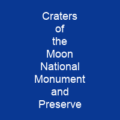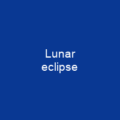The Moon: Earth’s Enigmatic Neighbor
Imagine the Moon as a colossal, silent sentinel orbiting our planet, its surface marked by craters, mountains, and vast plains of dark lava. How did this celestial body come to be? The prevailing theory suggests that around 4.51 billion years ago, a Mars-sized object called Theia collided with Earth, sending debris into space, which eventually coalesced to form the Moon.
The Lunar Surface: A Canvas of Time
Step onto the lunar surface, and you’ll find a landscape that has witnessed billions of years of cosmic history. The Moon’s surface is covered in dust, with mountains, craters, and vast plains called maria. These maria are ancient lava flows that have solidified over time, creating a mesmerizing pattern on the Moon’s face.
Humanity’s Journey to the Moon
The first human-made objects reached the Moon in 1959, marking the beginning of humanity’s quest to explore this enigmatic neighbor. In 1969, Neil Armstrong took his historic step on the lunar surface during the Apollo 11 mission, followed by several more crewed missions until 1972.
The Moon in Culture and Mythology
From ancient calendars to modern-day space exploration, the Moon has played a significant role. The English word ‘Moon’ comes from Old English mōna, which traces back to Proto-Indo-European *mēnsis ‘month’. In mythology, Cynthia is a poetic name for the Moon personified as a goddess, while Selene is the Greek goddess of the Moon.
Scientific Discoveries and Mysteries
The Moon’s geology offers a wealth of information about our solar system. It has no significant hydrosphere or atmosphere but possesses an exosphere with trace elements like sodium, potassium, helium-4, neon, argon-40, radon-222, and polonium-210. Water vapor has been detected in varying amounts across the lunar surface.
The Moon’s Impact on Earth
Our planet’s tides are a direct result of the Moon’s gravitational pull. The Moon’s orbit is slightly elliptical, causing tidal forces that affect not only our oceans but also the solid crust of the Earth. These forces can cause moonquakes and even influence the length of our days.
The Future of Lunar Exploration
With the Artemis program aiming to return astronauts to the Moon in the 2020s, humanity’s journey to the Moon is far from over. Private companies are also planning missions for 2024, and long-term plans include establishing a lunar base by China and Russia.
The Moon as a Site of Scientific Inquiry
From astronomical observations to potential economic exploitation, the Moon offers numerous opportunities for scientific research. The far side of the Moon is an ideal location for radio telescopes due to its lack of interference from Earth’s atmosphere.
Conclusion: A Shared Legacy
The Moon remains a symbol of human curiosity and ambition. As we continue to explore this celestial body, it serves as a reminder of our shared history and the boundless potential that lies beyond our planet. The Moon is not just a natural satellite; it’s a gateway to understanding our place in the universe.
You want to know more about Moon?
This page is based on the article Moon published in Wikipedia (retrieved on March 8, 2025) and was automatically summarized using artificial intelligence.







